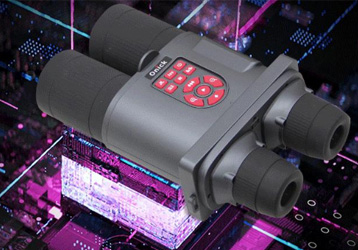On the stage of technological development, night vision goggles and thermal imagers are two unique visual aids that play an important role in both military and civilian fields. Initially, they originated from military applications, but with the advancement of technology, they have gradually entered the public eye.
The core difference between night vision goggles and thermal imagers lies in their working principles and signal capture methods. Night vision goggles use photoelectric conversion technology and use the principle of visible light reflection at night to capture and amplify these weak lights to achieve target object identification. However, thermal imagers are completely different. They capture 8-14 micron infrared signals, which are in the infrared region invisible to the human eye. Therefore, even in a dark environment without visible light, thermal imagers can clearly show the target's heat energy distribution, are not restricted by light, can penetrate smoke and dust, and provide more accurate positioning.

Compared with traditional night vision goggles, digital night vision goggles and thermal imagers are different in use. Although digital night vision goggles can provide observations at night, they usually require additional infrared auxiliary light sources, while thermal imagers are completely independent of such light sources, achieving all-weather monitoring and positioning. In practical applications, such as law enforcement, search and rescue, the flexibility and adaptability of thermal imagers are particularly critical.
In summary, the difference between night vision devices and thermal imagers lies in their working principles and environmental adaptability. Night vision devices rely on visible light and are restricted by darkness; while thermal imagers use infrared signals and can provide clear observation effects both at night and during the day. Understanding and distinguishing these characteristics will help us make wise decisions when choosing the right equipment.


